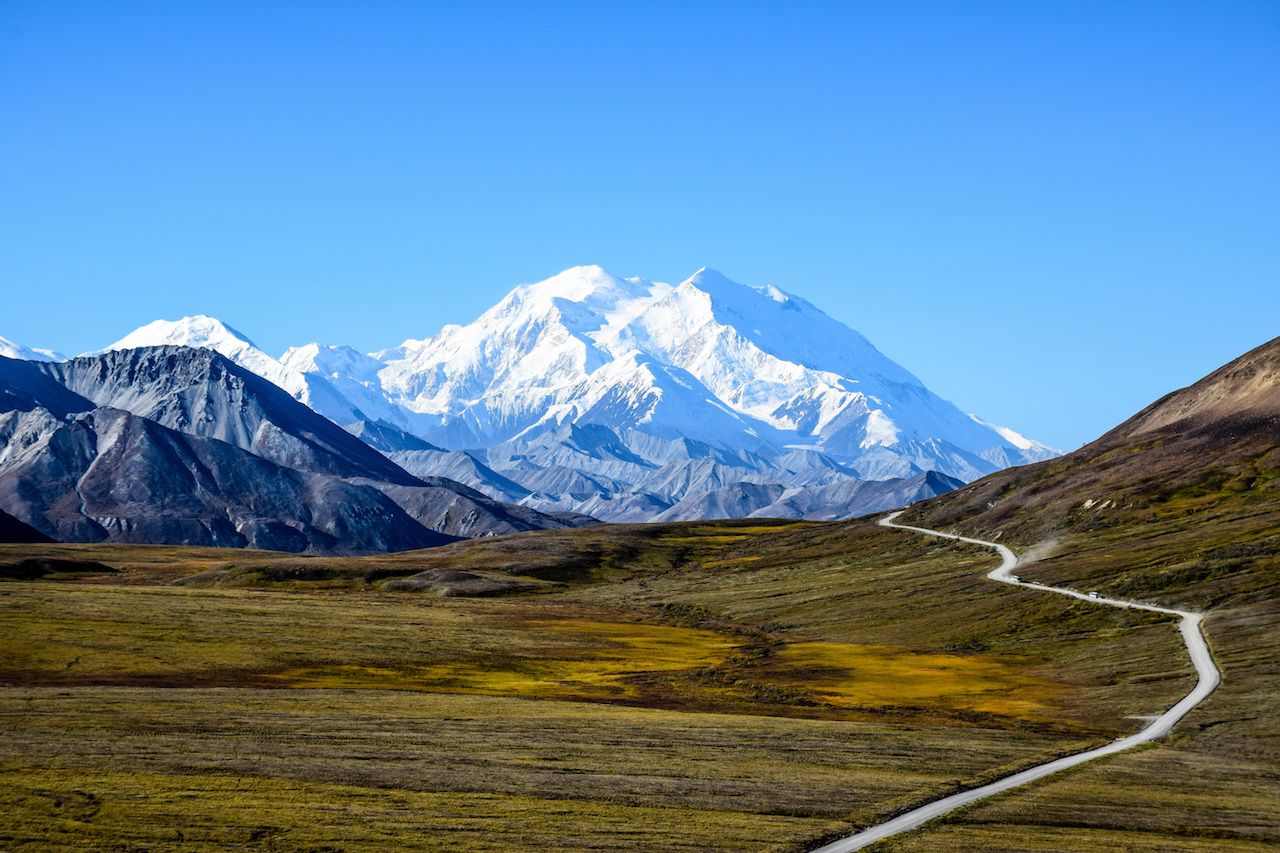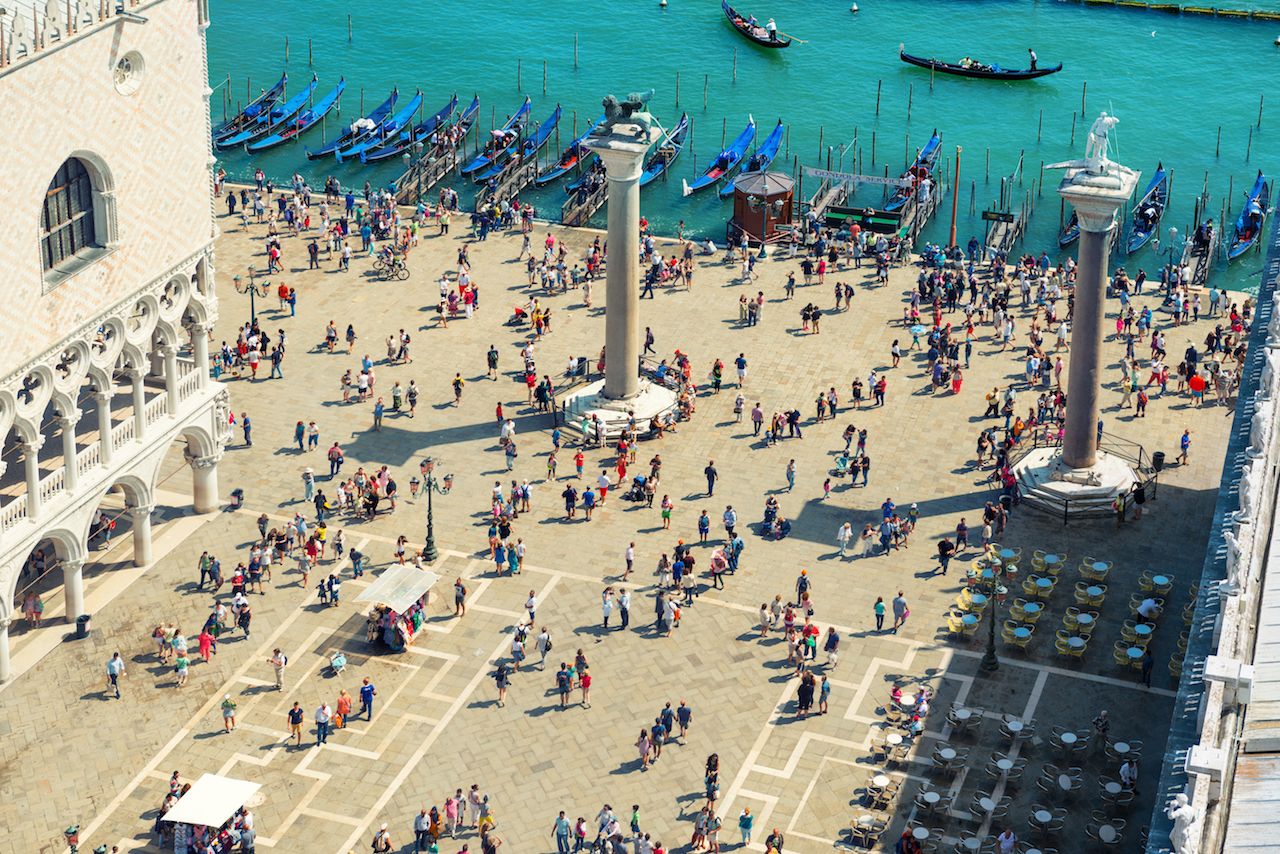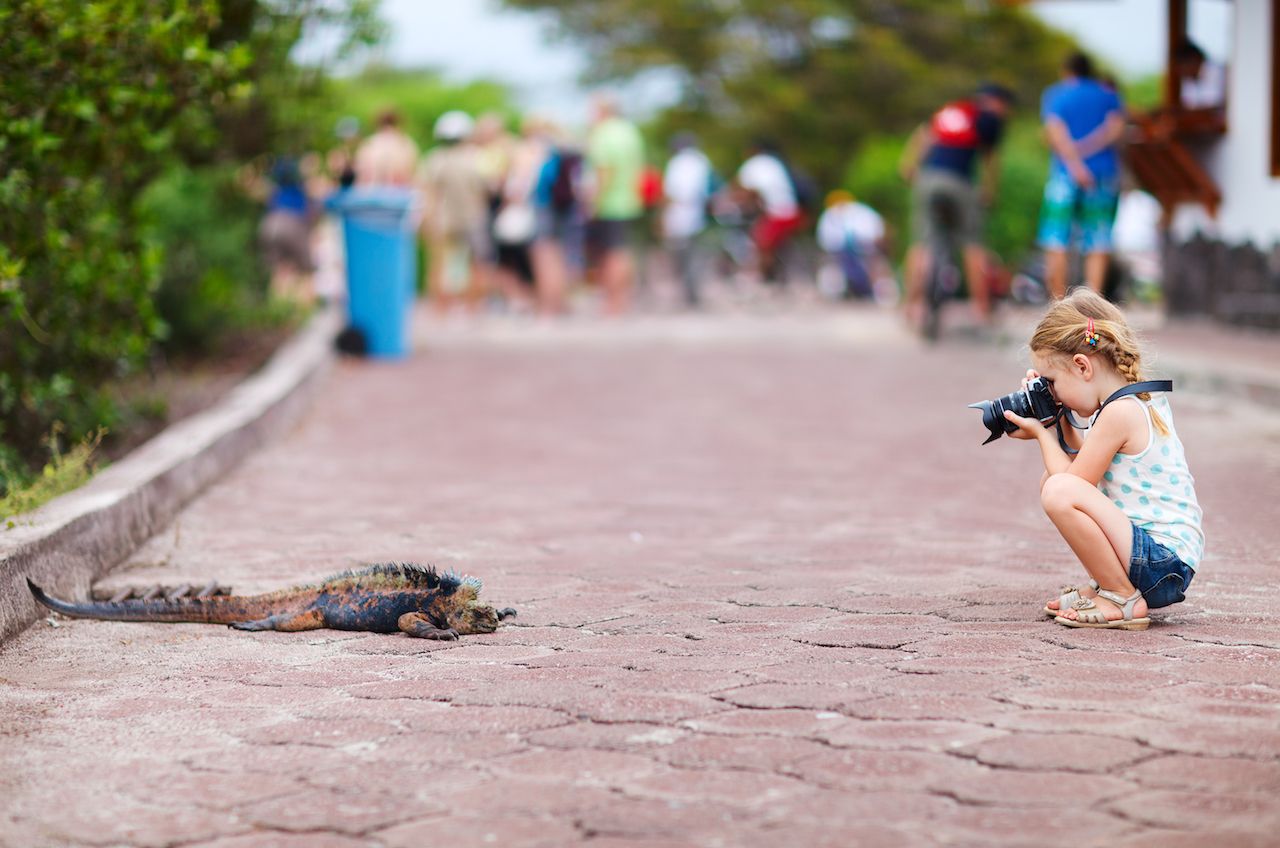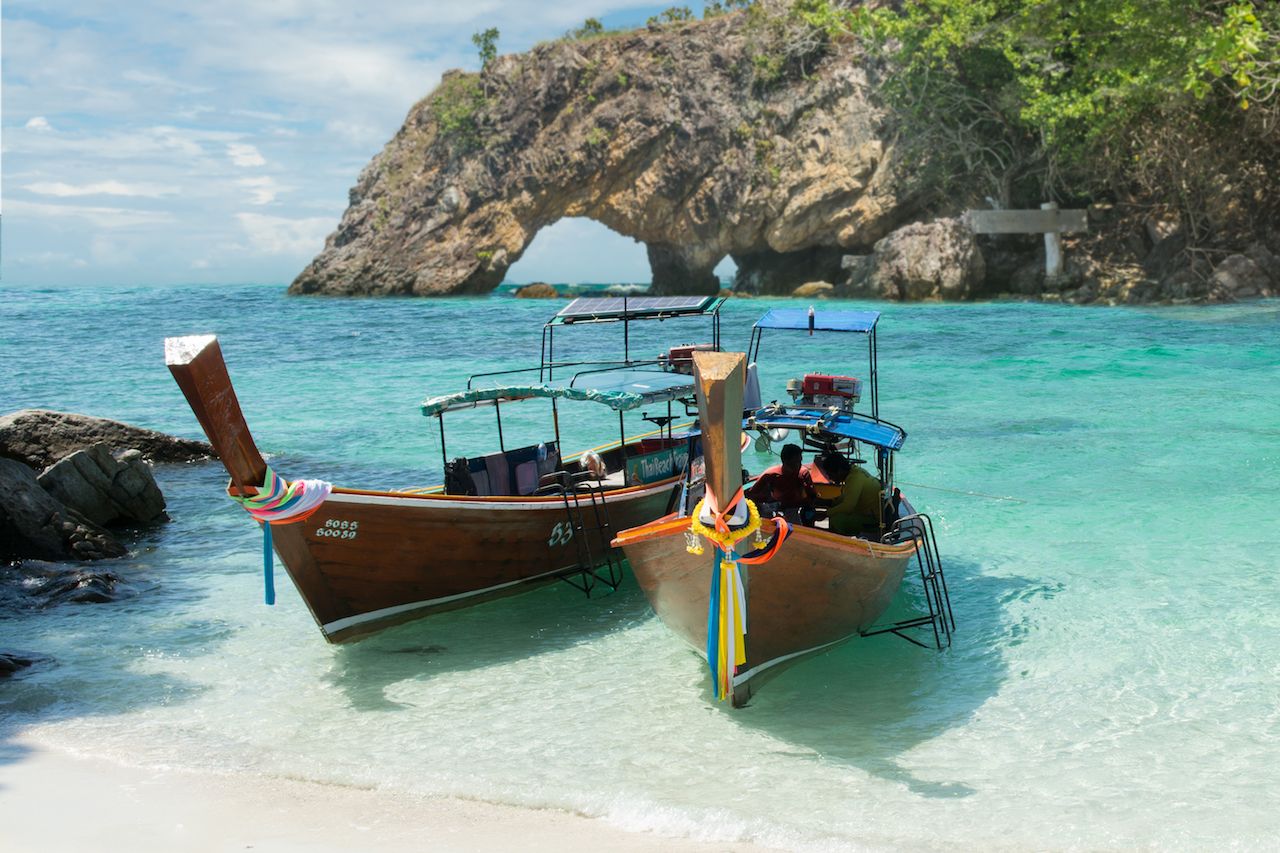Travel and tourism are one of the world’s largest industries. But, despite the trillions of dollars in global economic contribution, local economies are struggling to cope with overcrowded cities and the damage of natural environments. So, to put an end to the disruption and destruction, the following eleven popular destinations have implemented a ticketing and/or lottery system to curb tourism.
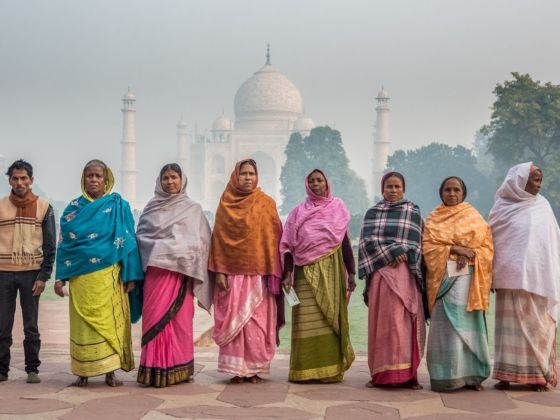
11 Overrun Destinations That Are Trying to Curb Tourism
1. The Taj Mahal
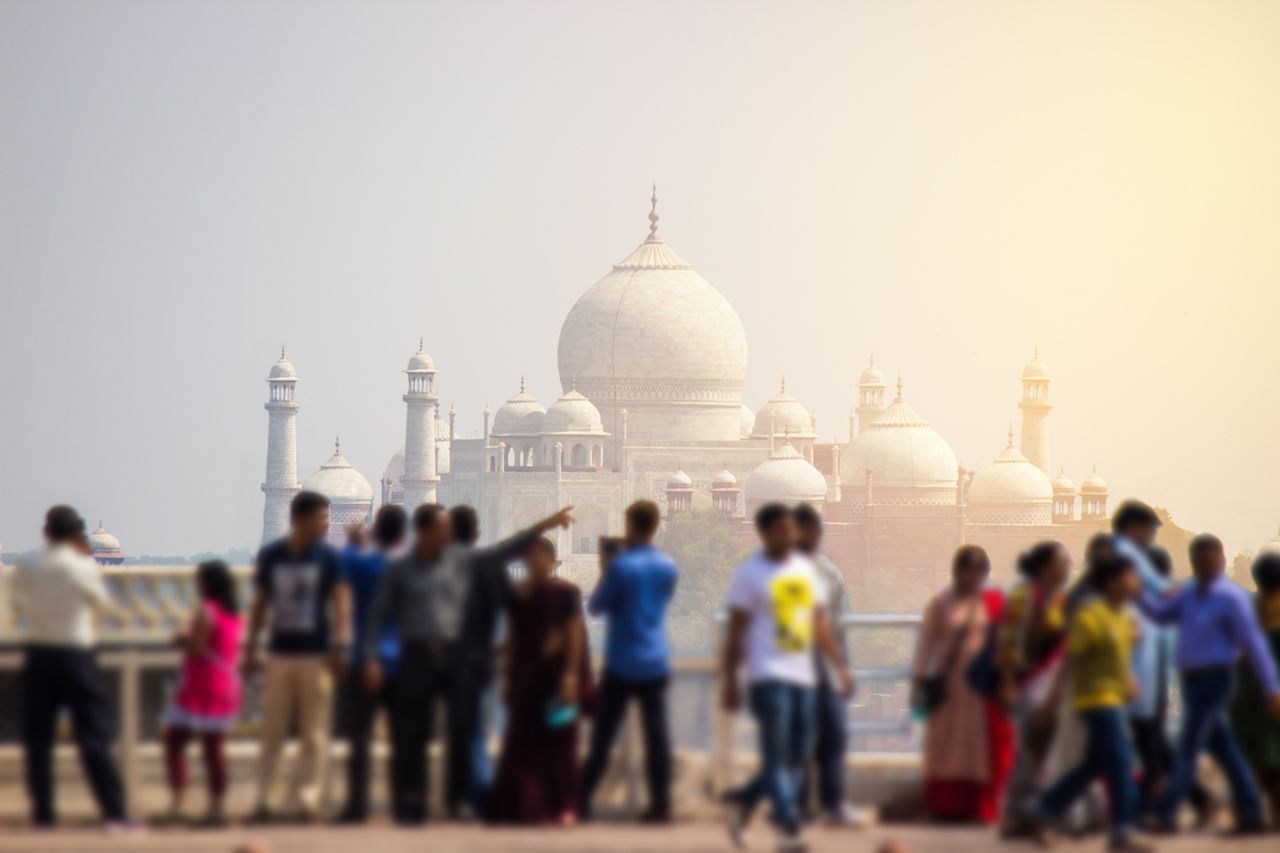
Photo: Thanaprus N/Shutterstock
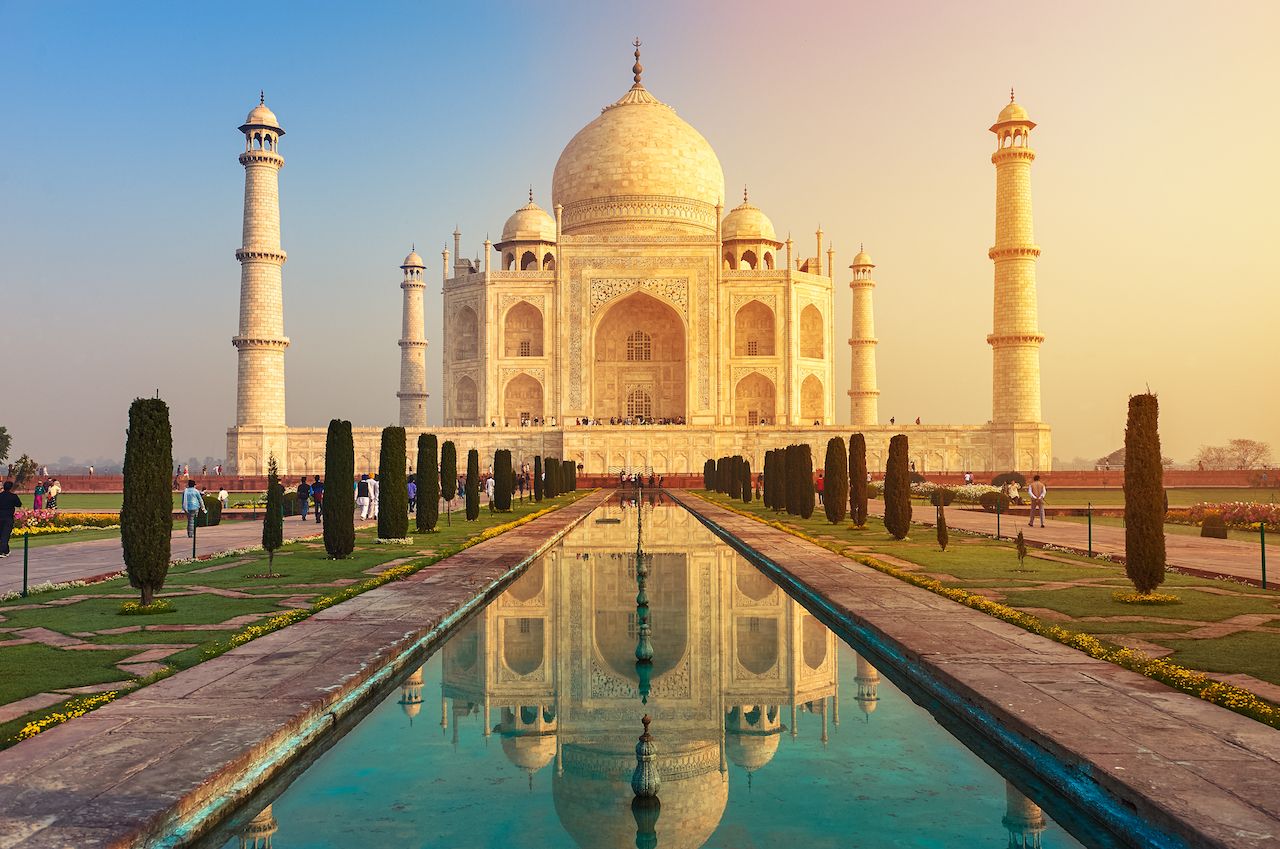
Photo: Yury Taranik/Shutterstock
In April, the UNESCO World Heritage site announced that visitors will only be allowed to tour the Indian palace for three hours. The new process — with goals to streamline in the future — will check ticket holders manually at the exit. If the visitor has overstayed the three-hour limit, a new ticket will need to be purchased. With close to eight million tourists visiting the Taj Mahal every year, this restriction comes in an effort to reduce congestion, manage conservation concerns with the white marble yellowing, and curb the pollution of the adjacent Yamuna River. Officials are considering a future proposal to cap entry to 40,000 visitors per day.
2. The Wave

Photo: Berzina/Shutterstock
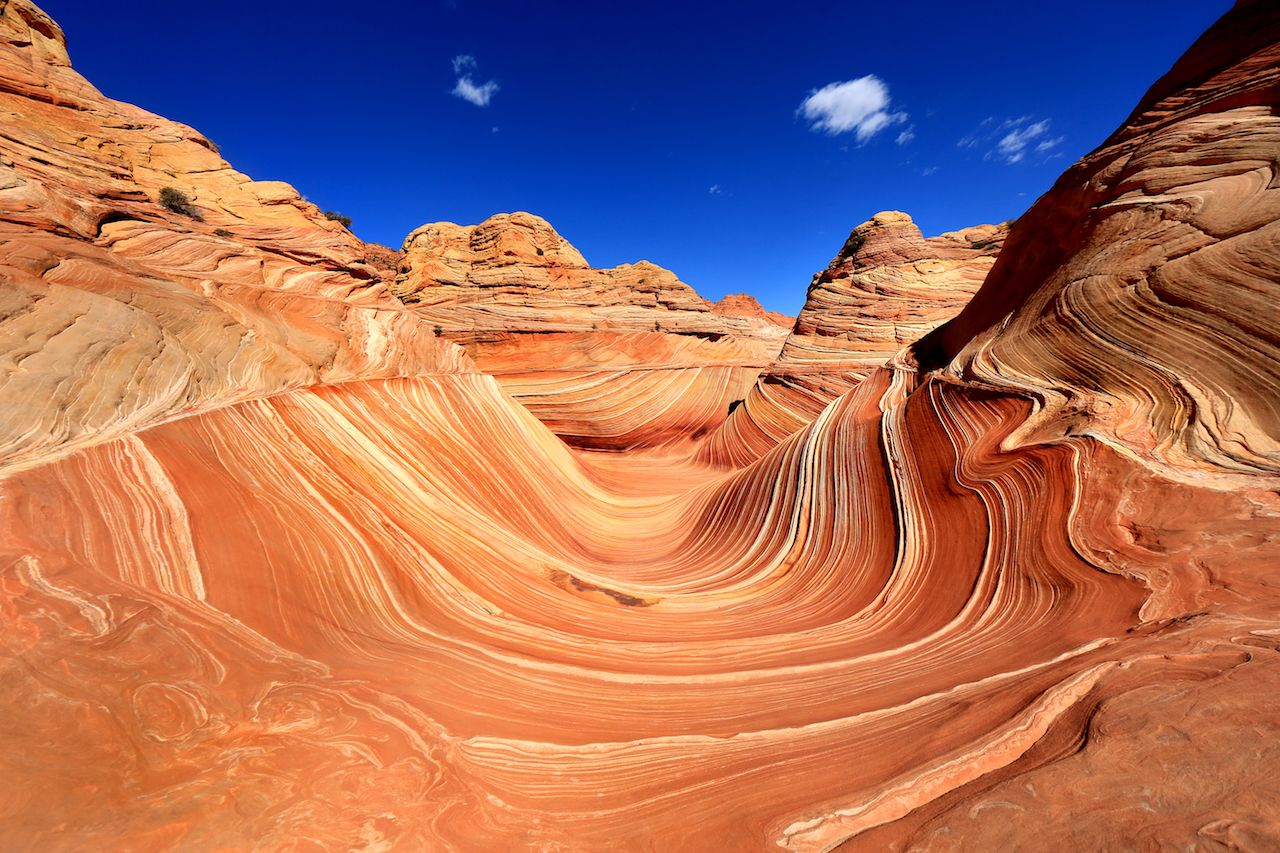
Photo: Tobkatrina/Shutterstock
The Wave is a renowned hiking destination in what’s called Coyote Buttes North. Located along the Utah/Arizona border, the area is small and considered fragile. Allowing only 20 hikers per day, advanced permits are required and obtained through a lottery system. Hikers can apply for a permit up to four months in advance and submit three entry dates per application. Successful applicants will only be authorized one trip. For those with a little more flexibility or who are planning a trip less than three months in advance, you can try your luck at obtaining a walk-in permit or checking the Coyote Buttes permit page for available slots.
3. Denali National Park
Denali National Park and Preserve, one of Alaska’s well-known landmarks, is six million acres of wilderness bisected by one road. In efforts to conserve this pristine land, strict practices are put in place. In the summer, visitors may tour the park on bus, shuttle, bicycle, or on foot but not with their own vehicle. If you want to use your own car, you will have to win the “Road Lottery”. In September, the park hosts a multi-day event where lottery winners are given a chance to purchase a day-long permit to drive as much of the Denali Park Road as weather permits. To partake in the Road Lottery event, applicants must apply between May 1st through May 30th of each year.
4. Half Dome
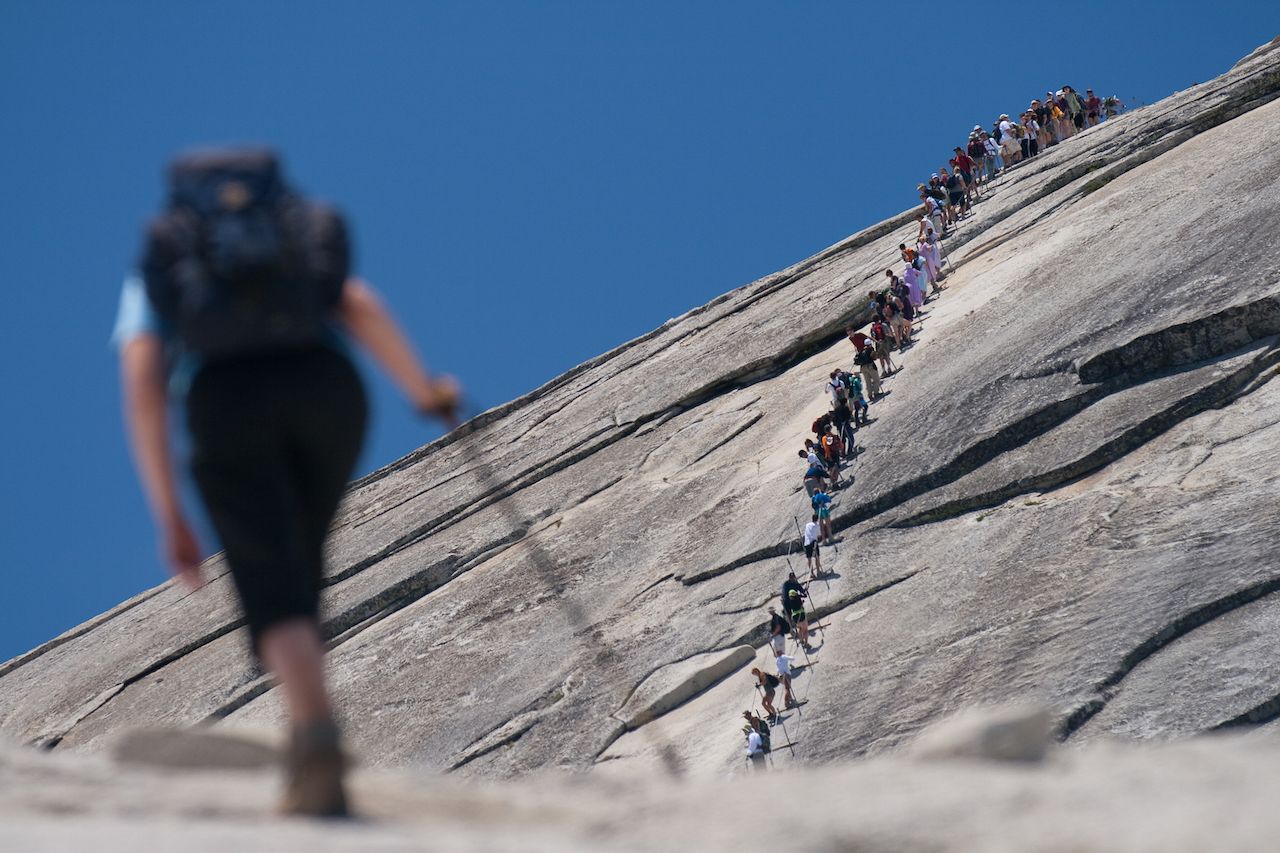
Photo: Celso Diniz/Shutterstock
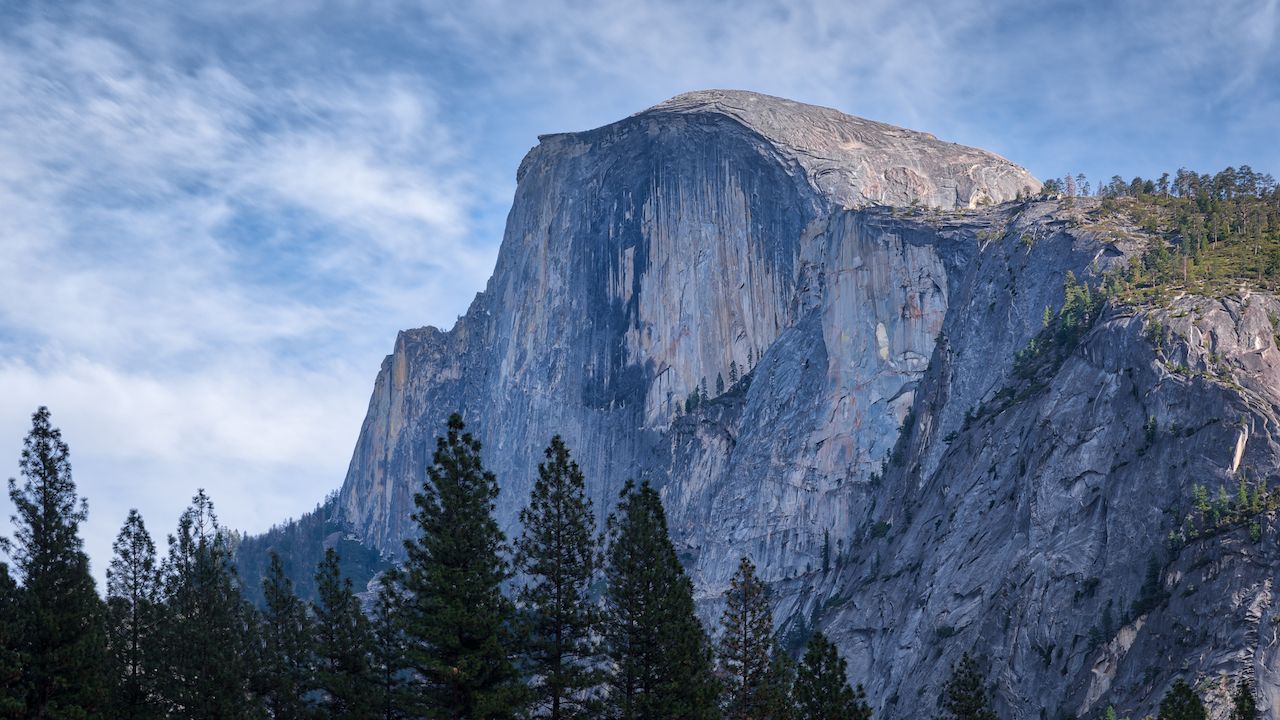
Photo: Dongyang Zhang/Shutterstock
Located in Yosemite National Park, at over 8,800 feet above sea level, Half Dome is an iconic challenge to many hikers. In 2008, up to 1,200 people a day made the trek up Half Dome. To protect the wilderness and natural resources, as well as to reduce crowding for safety reasons, permits to hike to the top of Half Dome are required seven days per week. Distributed through a lottery system with one preseason permit application period in March, applicants can apply for up to six permits (for six people) and for up to seven dates. Daily lotteries are also available during hiking season. The limit for hikers is capped at 300 (roughly 225-day hikers and 75 backpackers) each day on the Half Dome Trail.
5. Machu Picchu
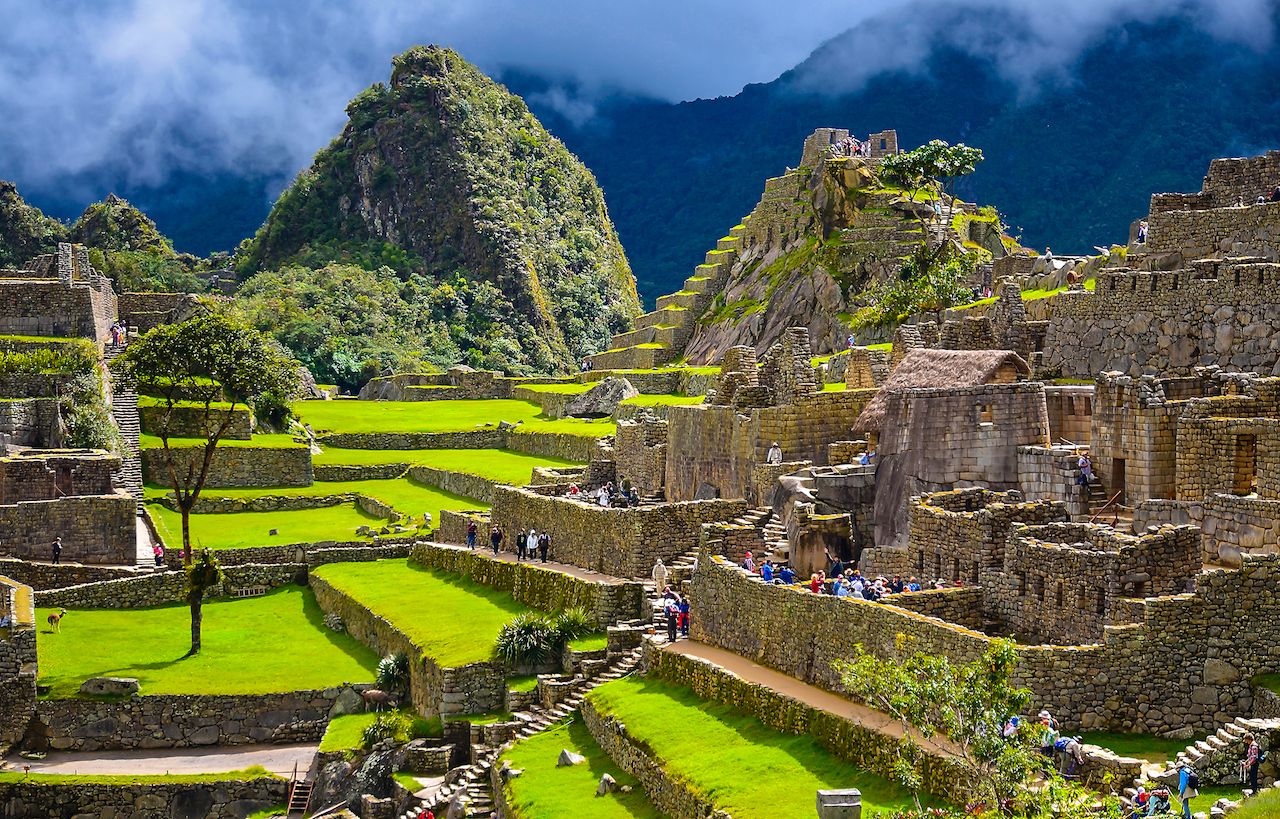
Photo: VarnaK/Shutterstock
In April 2017, major changes were announced by Peru’s Ministry of Culture with new restrictions on access to Machu Picchu as a means to help protect this iconic and important UNESCO World Heritage site. While there isn’t a lottery system (yet), some of the major changes involve entry and time limits spent on the site. As of July, 2017 entrance into Machu Picchu has only been possible with an accompaniment of an officially registered tour guide. With a maximum capacity of 2,500 visitors per day, tourists need to pre-book tickets and tours well in advance prior to visiting. While securing your guaranteed ticket is great, that too comes with restrictions. In the past, it was possible to come and go from the ancient grounds, but the new rules mean that once you leave you are not be able to re-enter. However, this may not matter much with the new time entry restrictions. Times are limited to two entry windows: 6 AM – 12 PM and 12 PM – 5:30 PM. Visitors may only enter within one of the two entrance windows and must leave the site before the end of the session.
6. Cinque Terre
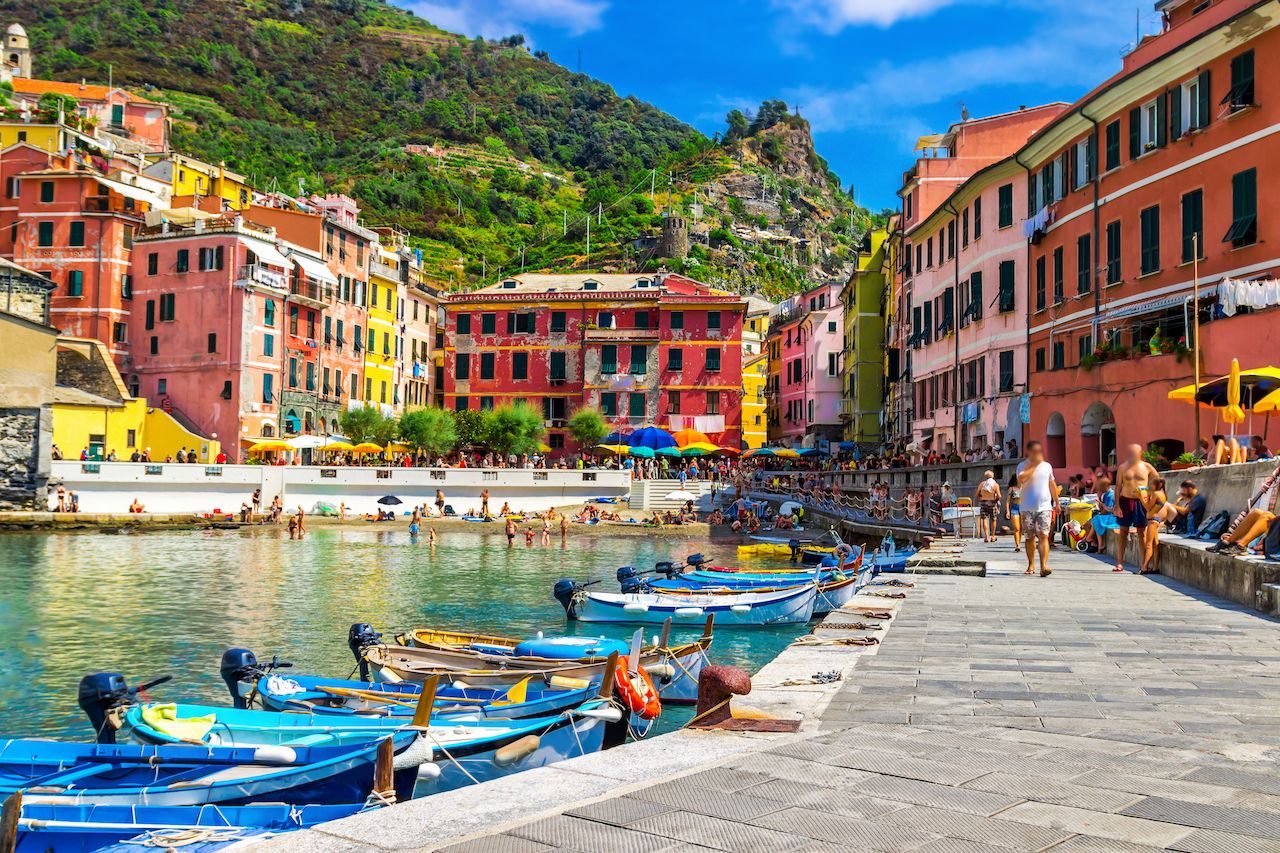
Photo: Iryna1/Shutterstock

Photo: Anna Om/Shutterstock
The colorful, picturesque village on the Italian Riviera drew 2.5 million visitors in 2015. Residents say day-trip visitors from cruise ships overwhelmed the communities, leading authorities to pledge to cap the number of tourists to 1.5 million visitors. While there are no definitive rules and limitations at present, it is clear that the region is evaluating a solution to mass tourism. There are plans to improve an app created in 2017 with a map of trails to possibly include a virtual waiting list for walking paid routes. It is suggested that the limit will only affect paid routes and visitors will still be able to visit the villages and free walking trails with no limitations… for now, at least.
7. Santorini
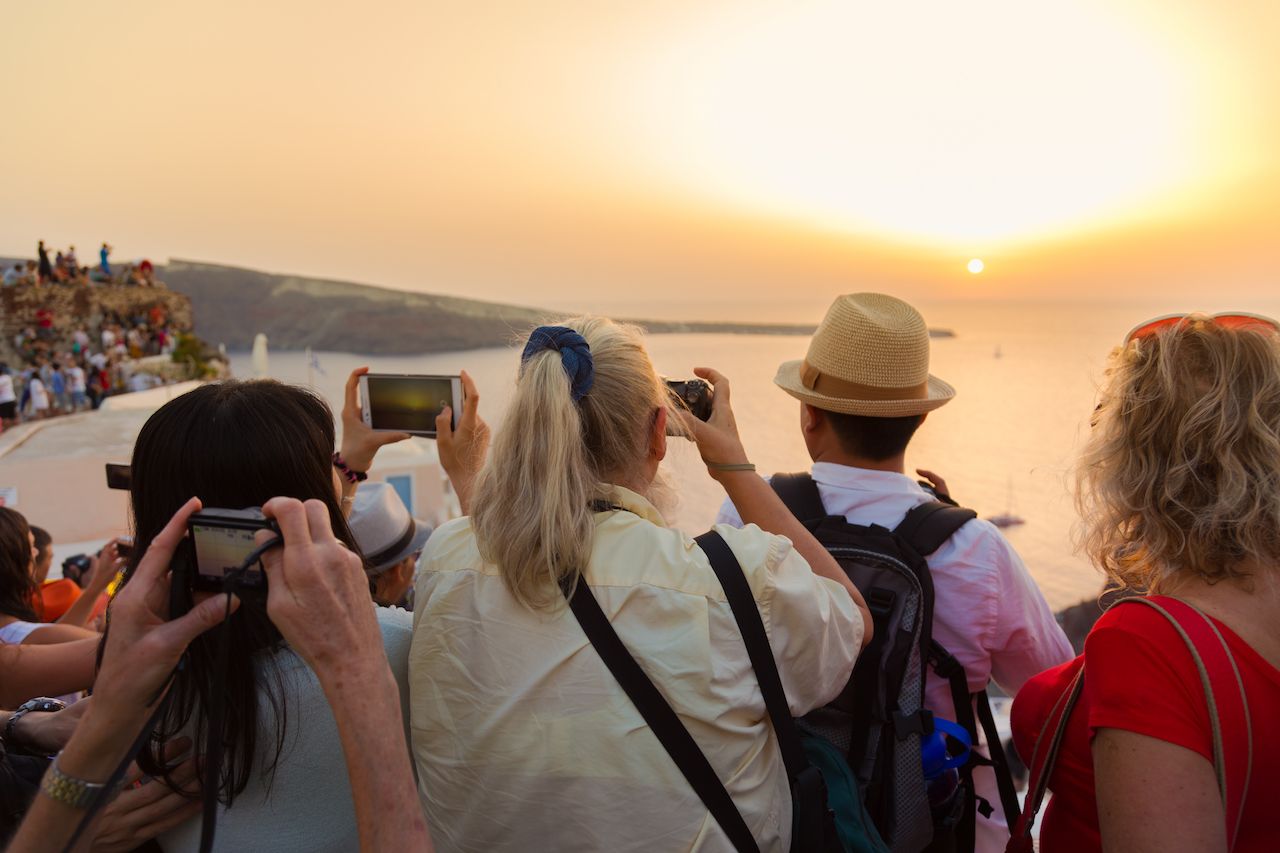
Photo: Matej Kastelic/Shutterstock
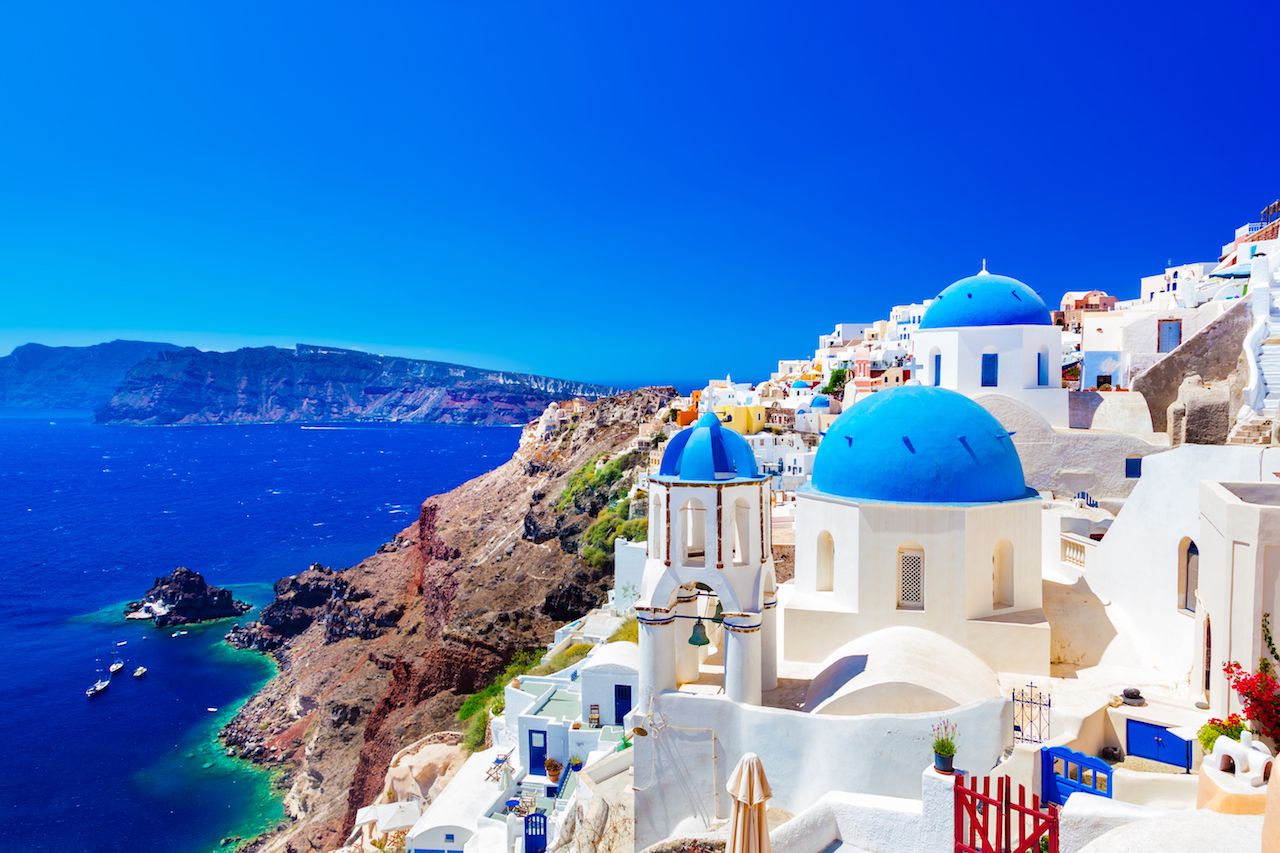
Photo: Photocreo Michal Bidnarek
Lured by beauty, the Greek island of Santorini can lay claim to being one of the most popular destinations in all of Greece. With close to 2 million travelers each year, the island is facing challenges to keep up with its growing popularity. Socioeconomic and environmental pressures are a result of increased construction, water consumption, and the demand for supplies — a cost the island is finding difficult to afford. In an attempt to control tourism, Santorini has implemented a new system that limits the number of cruise passengers allowed on land each day. The new system will allow a maximum of 8000 cruise passengers to disembark per day, a large dip from the estimated 18,000 cruise passengers seen in previous years.
8. Venice
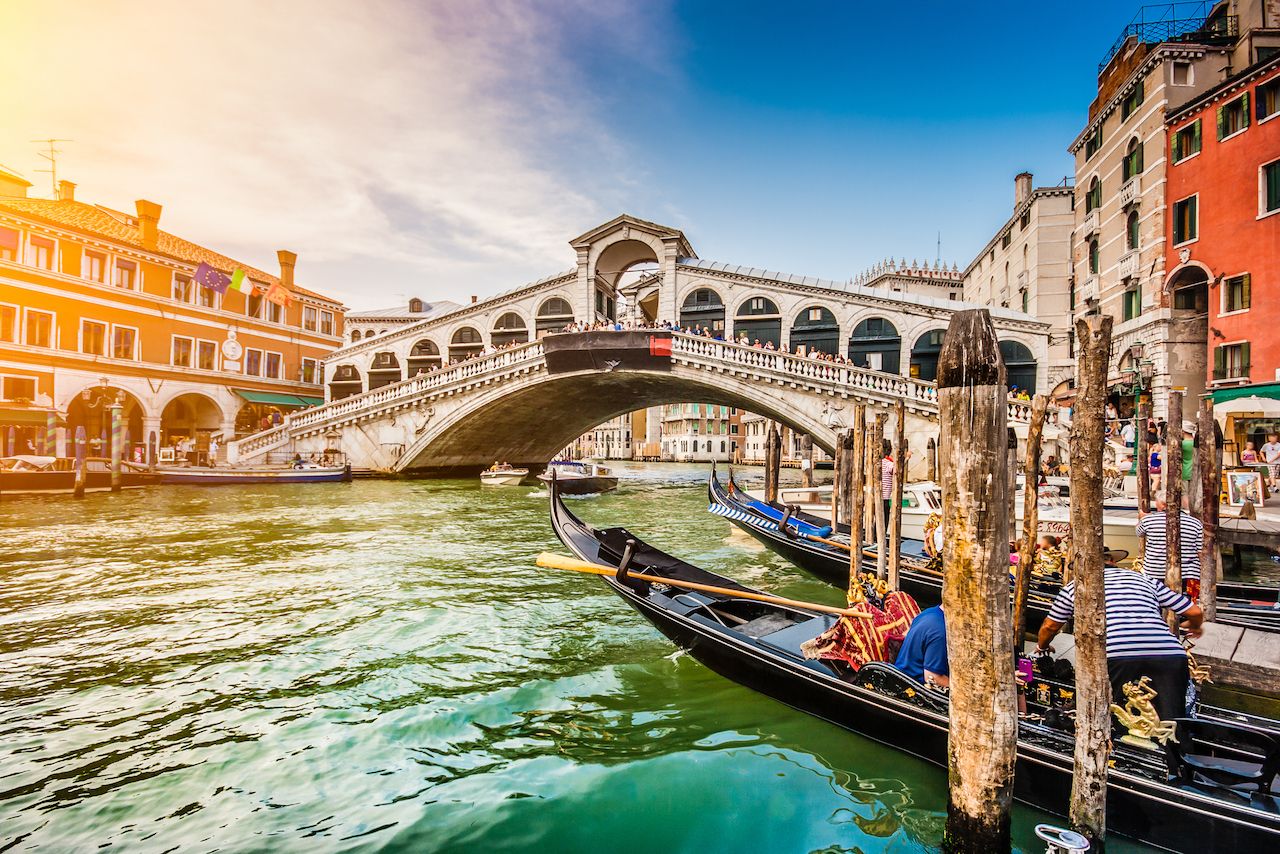
Photo: Canada Stock/Shutterstock
Tourists visiting Venice have exceeded the number of locals. Approximately 55,000 people call this historic city home, whereas 70,000 tourists visit each day on cruise ships, buses, or trains. The fragile city is subject to congested walkways, clogged canals, and excessive amounts of litter from the human traffic. Just this month, the mayor of Venice announced a plan to segregate tourists and locals, and only locals with “Venezia Unica” cards would have access to certain parts of the city. Turnstiles and barriers have been put in place to redirect visitors to popular Venetian landmarks. Travelers disembarking from the water are now prevented from doing so on Riva degli Schiavoni (the usual disembarking point in front of the Cornoldi barracks) and will now be required to disembark from a special facility at the Fondamente Nuove. Tourists driving to the city may be turned away if a space in one of the city’s parking lots has not been reserved. This experimental system in Venice could very well become the new tourism management system as the busy summer season approaches.
9. Dubrovnik
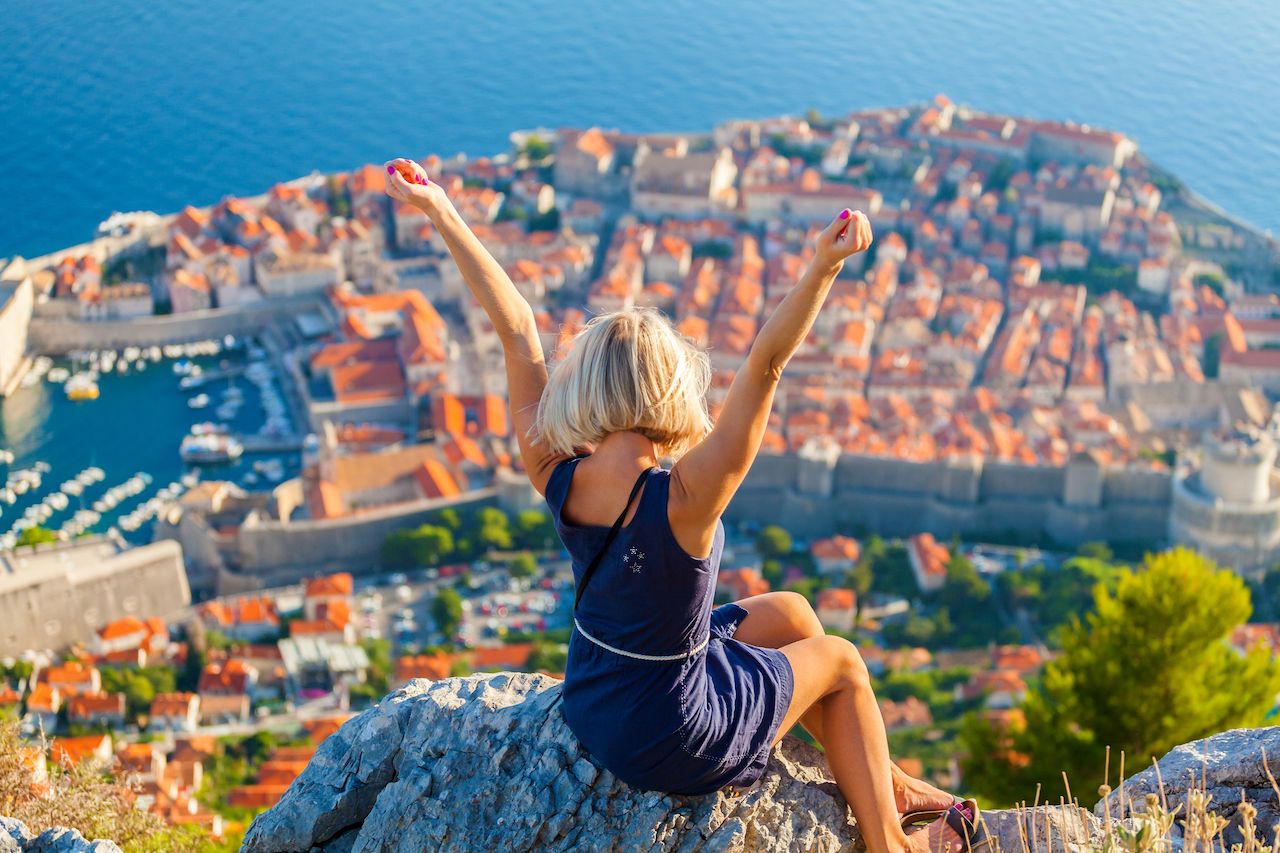
Photo: Lals Stock/Shutterstock

Photo: Ihor Pasternak/Shutterstock
The Medieval Croatian city plans to drastically cut the number of tourists allowed to prevent overcrowding. The UNESCO recommended limit of 8,000 visitors per day has been cut to the 6,000 visitor range. CCTV systems monitoring tourist numbers will be implemented accordingly if the tourist number exceeds 8,000. Travelers who are concerned about these restrictions can purchase a Dubrovnik City Card and receive priority access to several top attractions and free use of public transportation. Local officials are also looking to control the number of cruise ships arriving at peak times and impose limitations on daily tour groups to the city. The ongoing changes to preserve the city come after a warning from UNESCO that Dubrovnik’s world heritage status was at risk.
10. Galápagos Islands
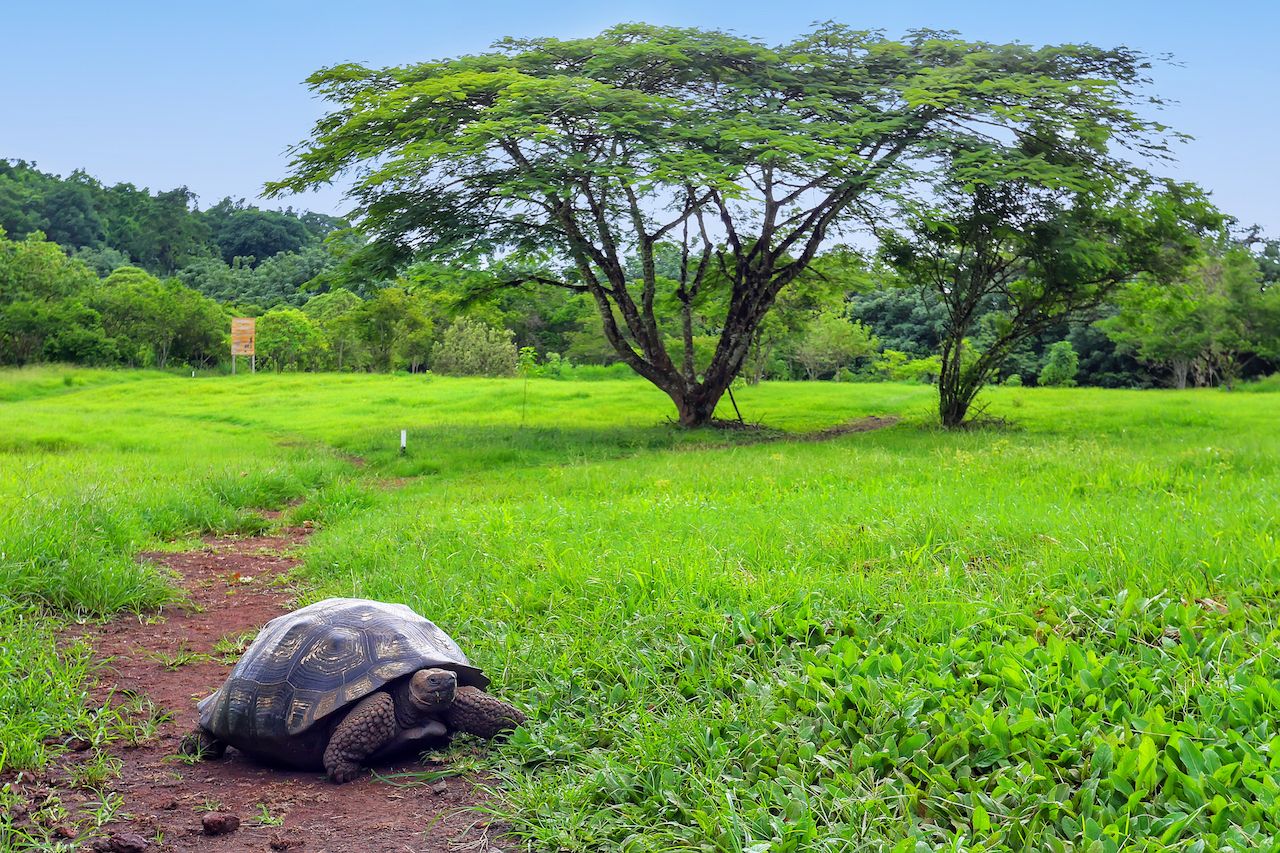
Photo: Don Mammoser/Shutterstock
Considered a premier destination for wildlife, the volcanic archipelago that makes up the Galápagos Islands has strong sustainability and conservation practices to keep the isolated terrain and diversity of species exactly as it is found now. Visitors may visit the Galápagos Islands once a tourist card is obtained. To recieve a tourist card, visitors must go to the Gobierno Especial del Régimen de Galápagos counters at the Quito and Guayaquil airports. Specific requirements are necessary for approval, such as
- A round-trip airfare confirmation,
- Hotel and/or cruise reservation for the days travelers will be in the Galápagos Islands
- Proof if the tourist is staying with a resident, in which a letter of invitation from the resident is required
Once the required materials are presented, a $20 payment will be necessary to purchase a tourist card.
11. The Koh Khai Islands, Thailand
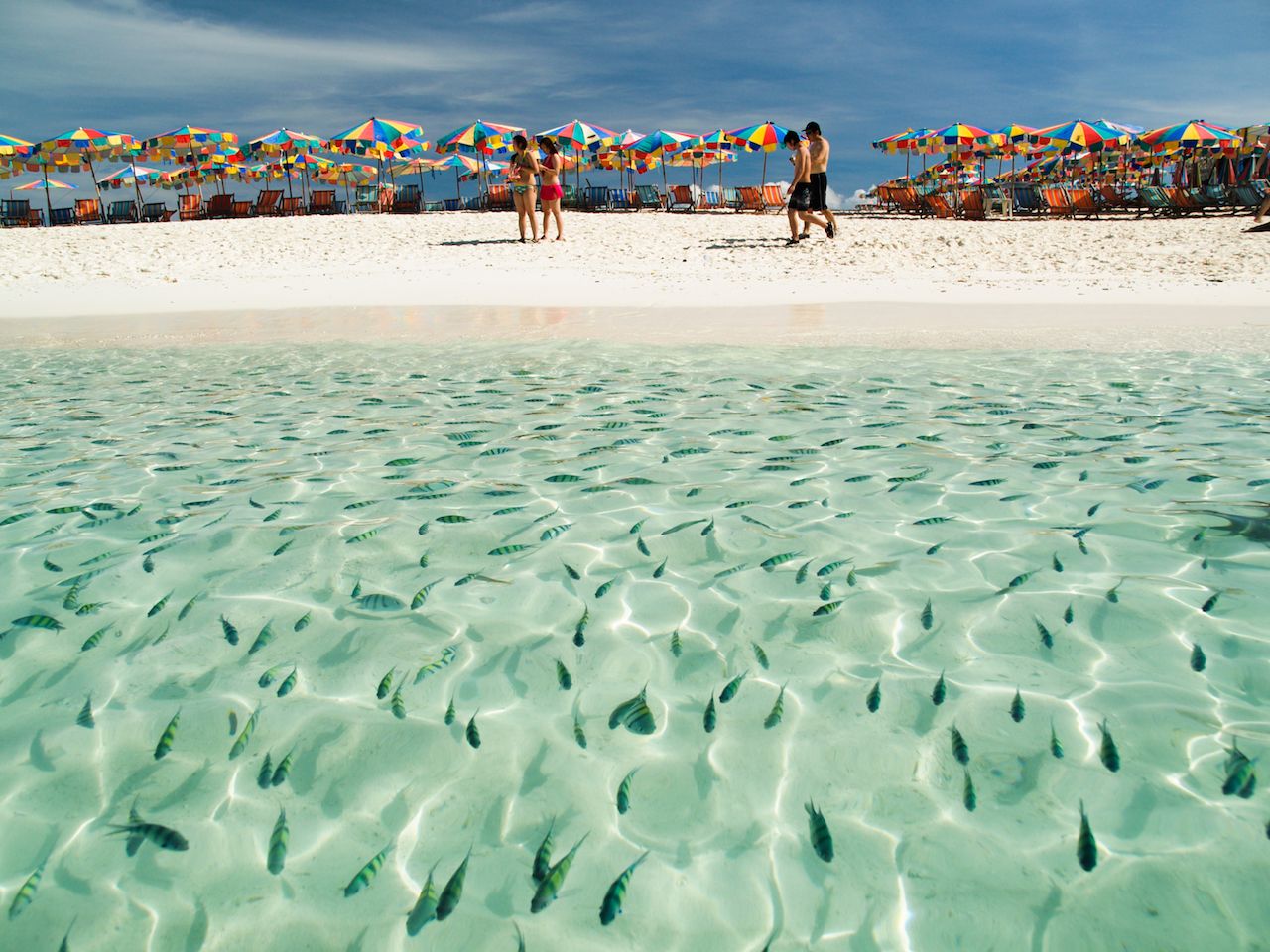
Photo: jajaladdawan/Shutterstock
According to the Department of Marine and Coastal Resources (DMCR), the impact of tourism on the local ecology in Thailand’s popular islands is tremendous. It is estimated that 80% of reefs have been degraded, spurring action to ban tourists from the popular day-trip location of nearby Phuket. This conservation effort was evaluated after an assessment of the coral damage in the Koh Khai area. While coral-bleaching is naturally occurring, marine researchers have also determined that the increasing number of tourists and boats are heavily impacting the exponential demise of the reefs. The Thai islands alone welcome millions of international visitors each year, resulting in increased pressure to preserved these places of paradise. The monitoring of tour operator and tourist activity is now in place to prevent people from engaging in activities that will further damage the ecosystem.

